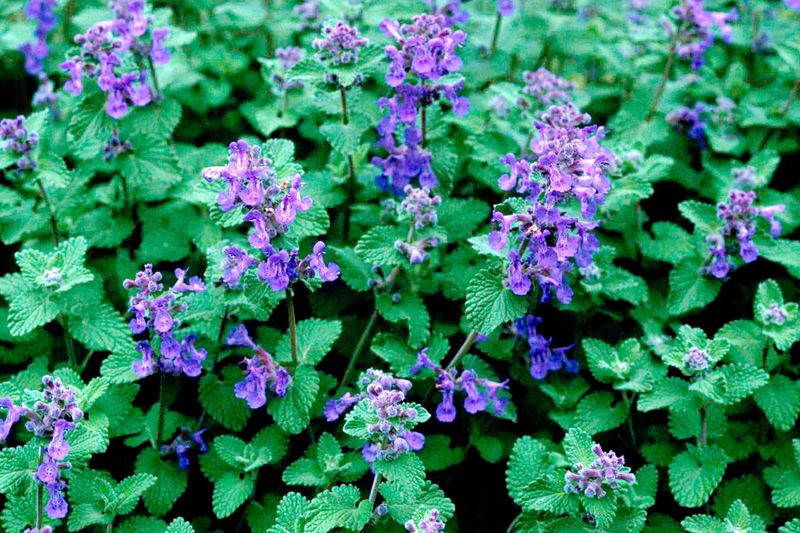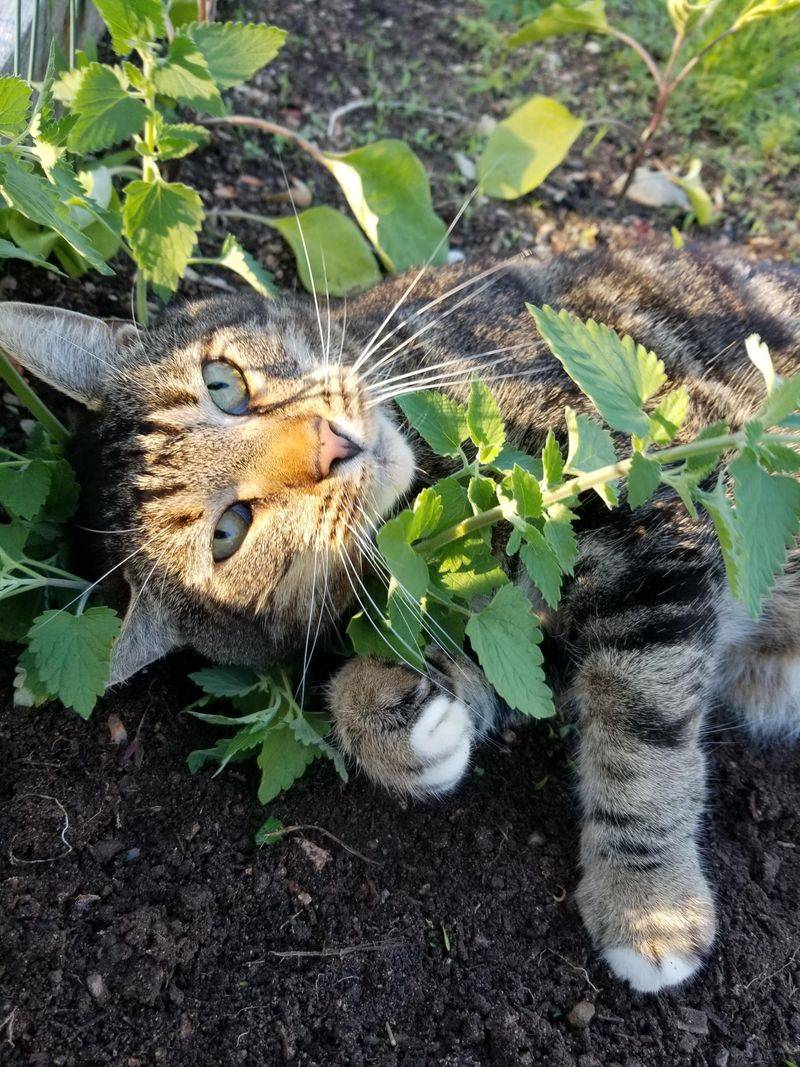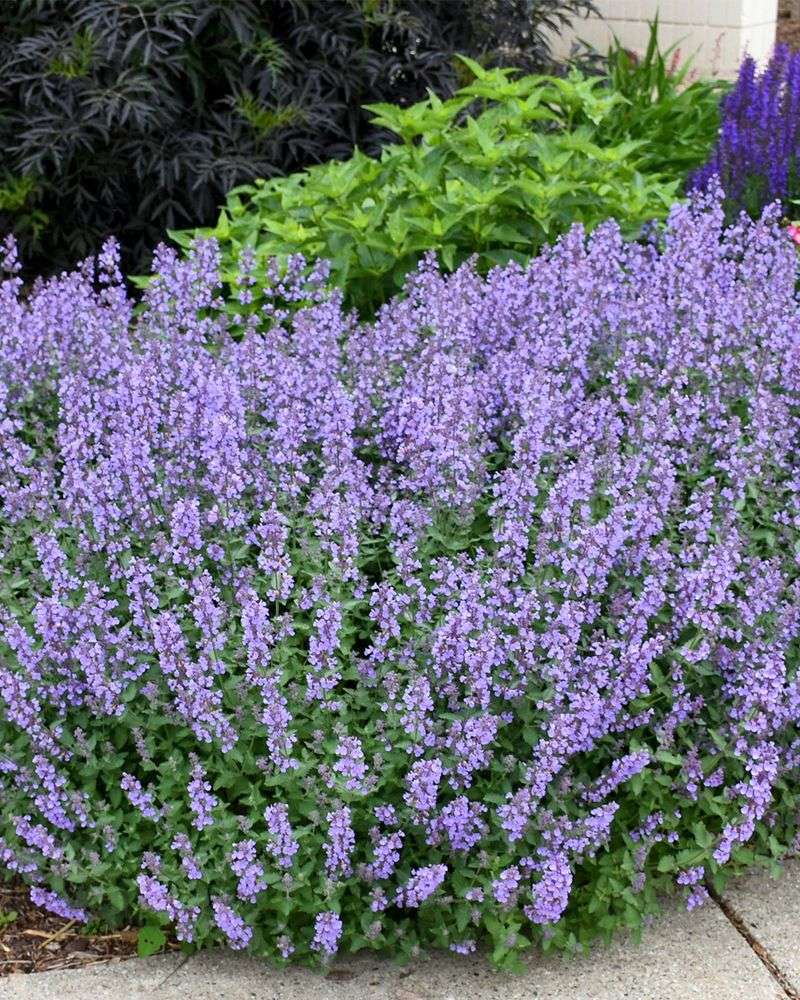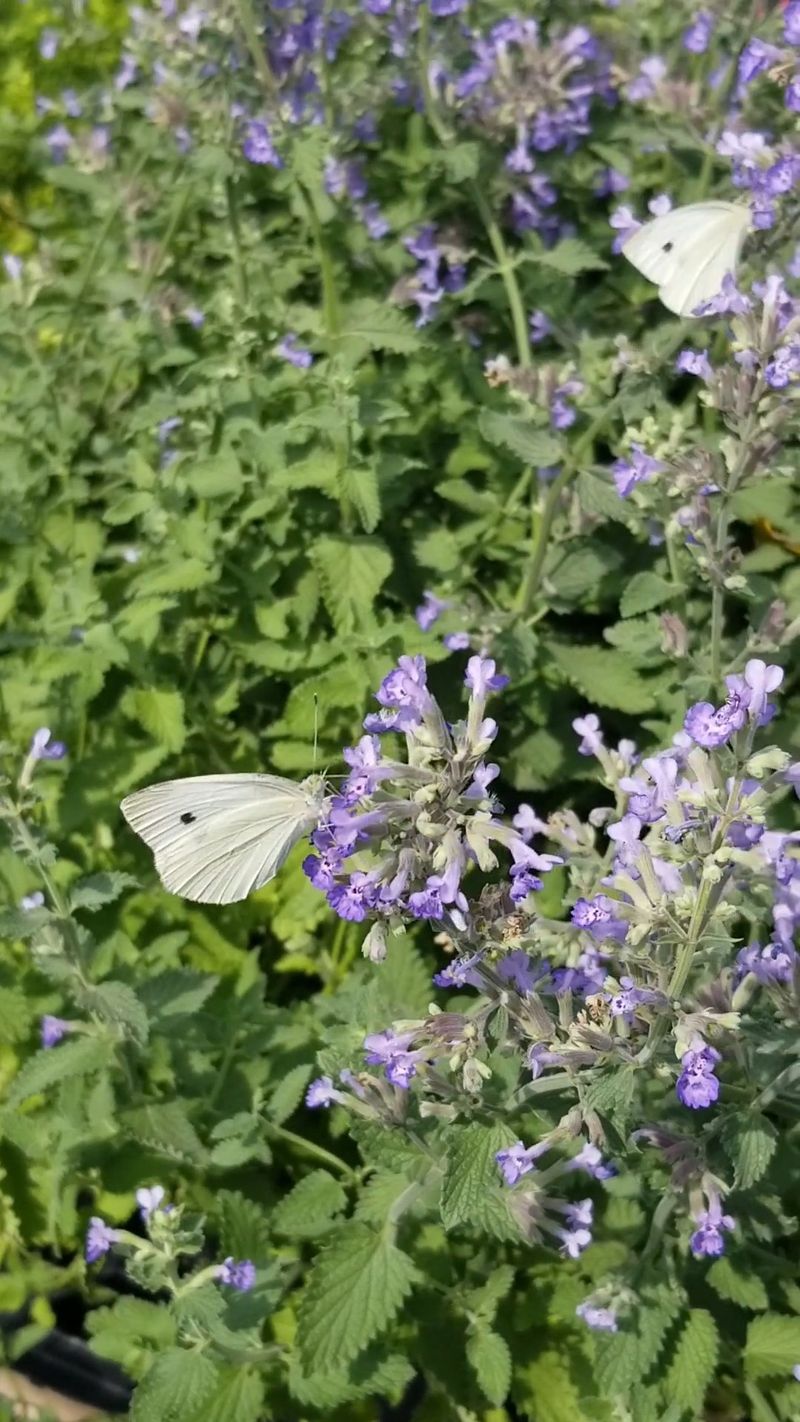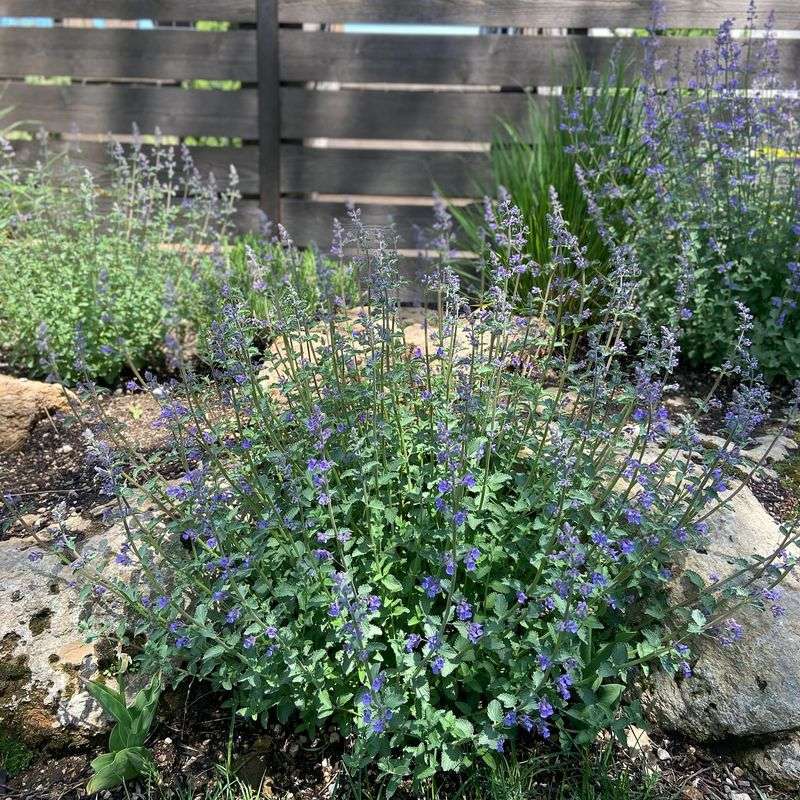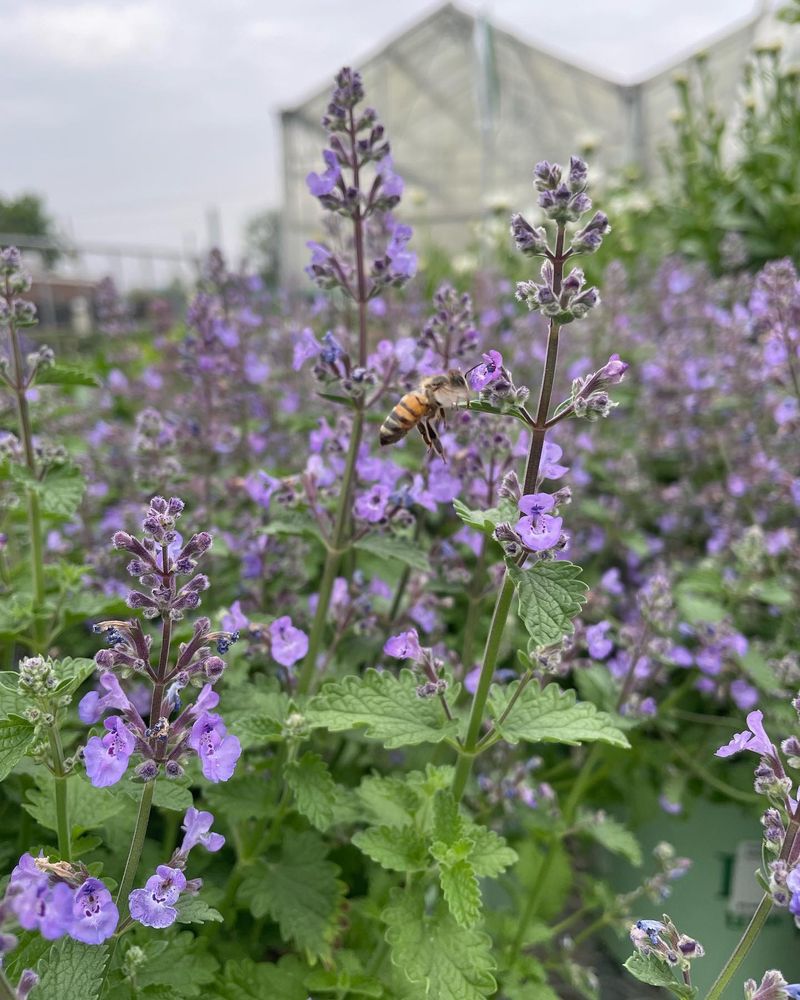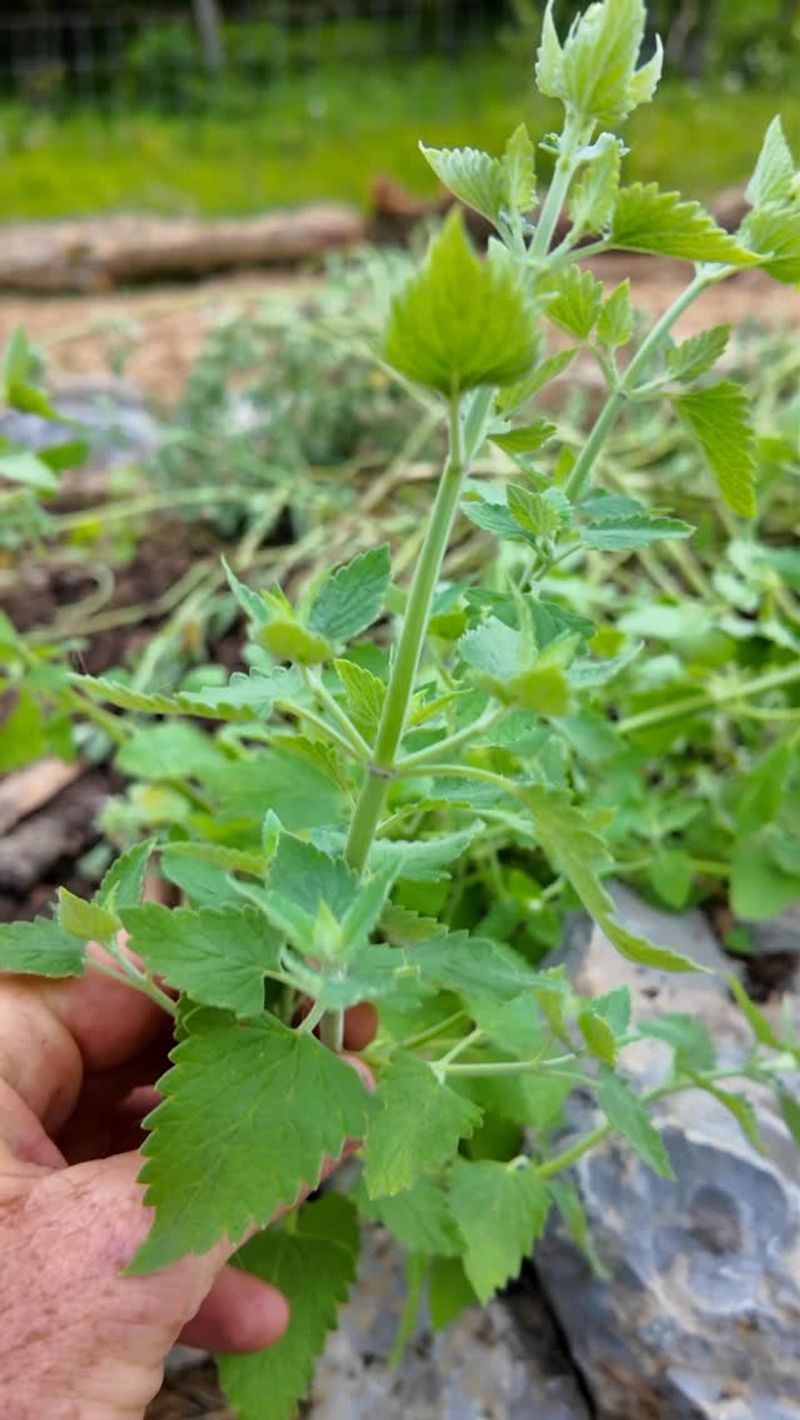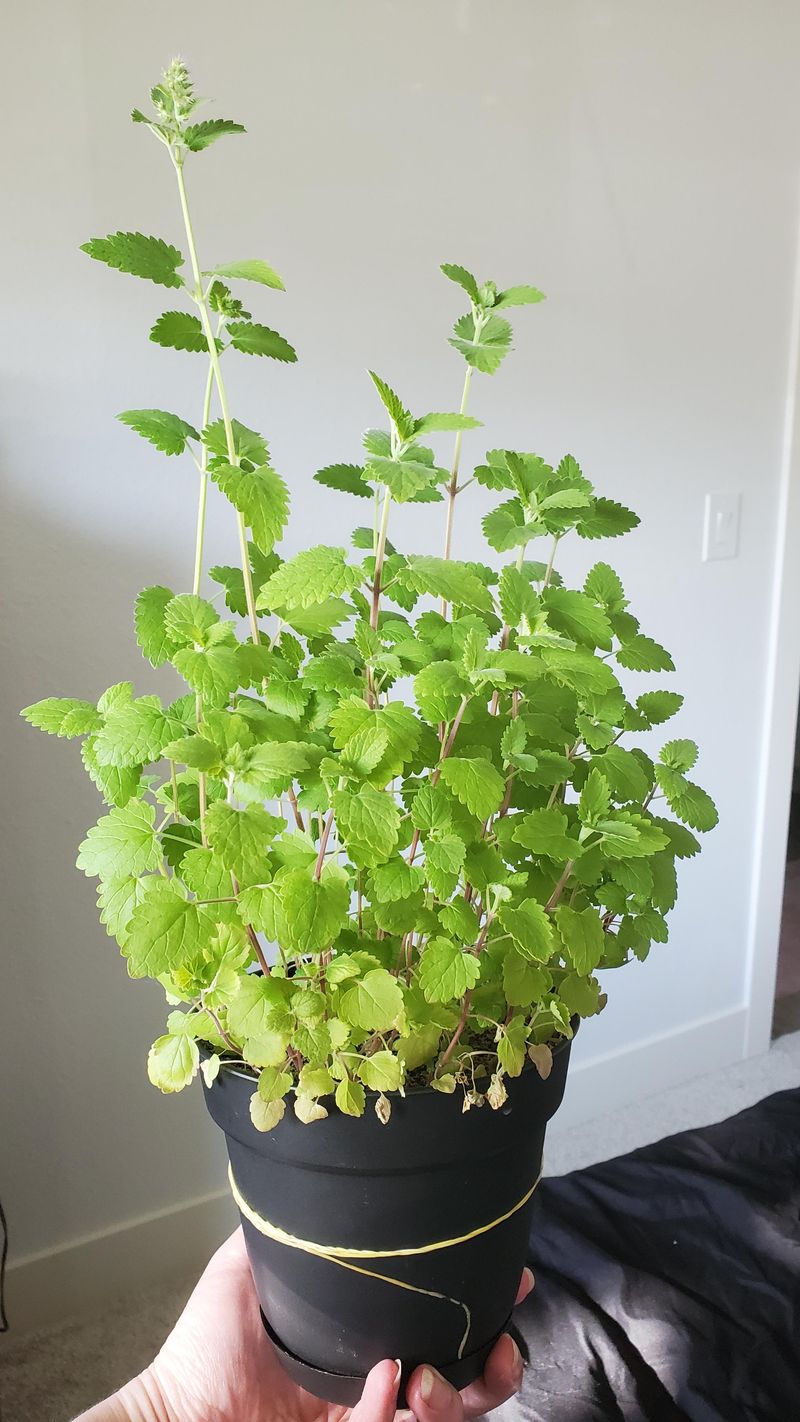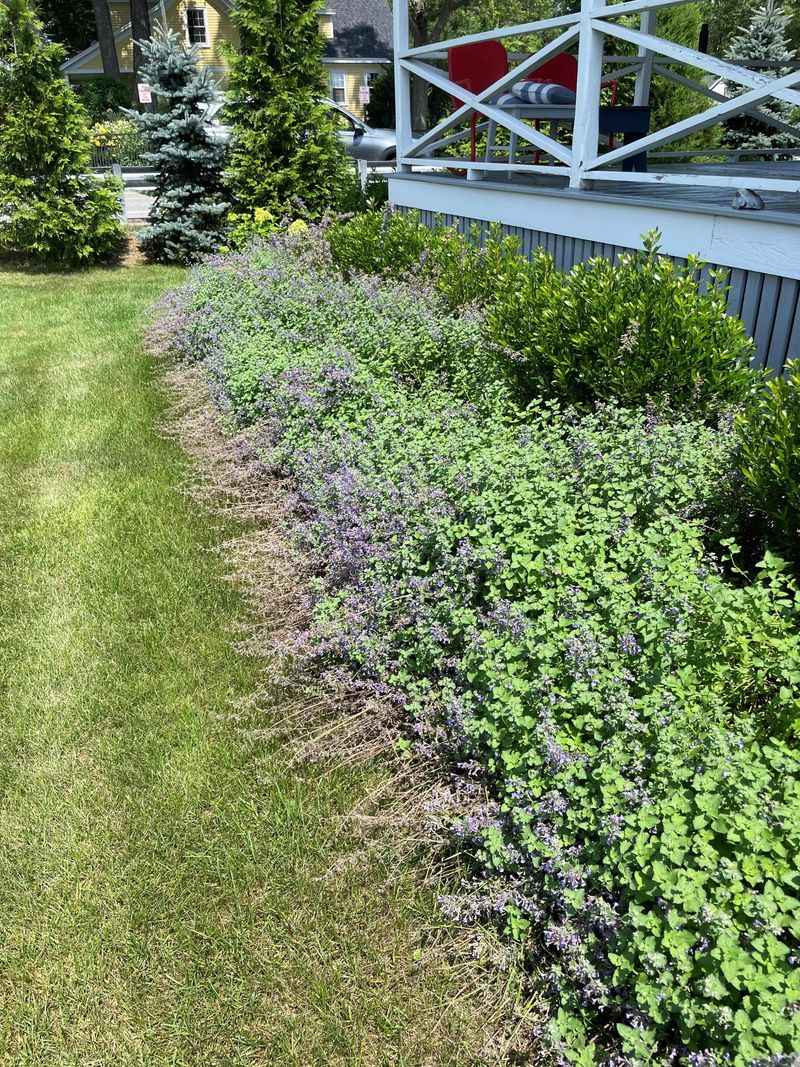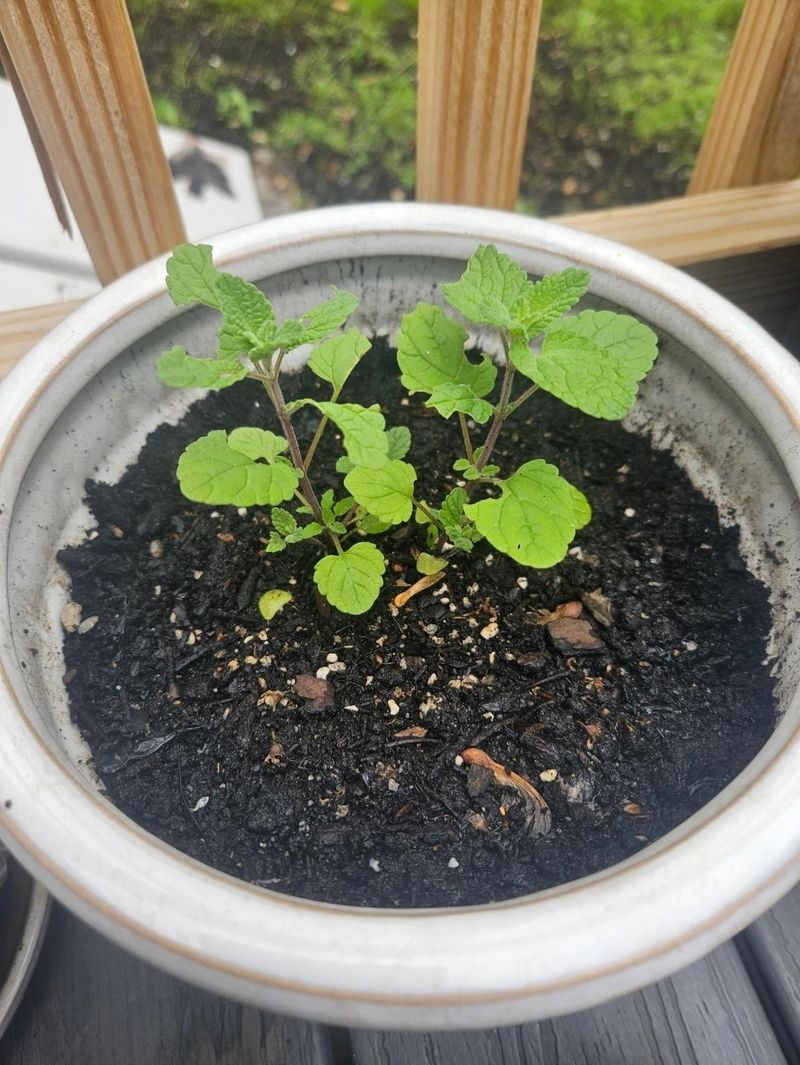Catmint and catnip may seem like garden cousins, but they each bring their own unique charm and quirks to the table. Knowing these 15 key differences helps you pick the perfect plant for your garden’s vibe.
From appearance to how cats react, these details make all the difference. I’ll walk you through what sets them apart so you can grow with confidence.
Let’s get to know these fascinating plants better!
1. Botanical Family
Both plants belong to the mint family (Lamiaceae), but they’re actually different species! Catnip is Nepeta cataria, while catmint refers to other Nepeta species, most commonly Nepeta × faassenii.
This family relationship explains their similar square stems and aromatic properties, yet they remain distinct plants with different characteristics in gardens.
2. Appearance
Catnip grows somewhat messily with light green, heart-shaped leaves that have scalloped edges. The plant tends to look a bit scraggly and can reach up to 3-4 feet tall with less ornamental value.
Catmint showcases more compact growth with smaller, gray-green leaves and a neater, mounded habit. Its more attractive appearance makes it the preferred choice for decorative garden borders.
3. Flower Color
Catmint produces vibrant lavender-blue flowers that create stunning drifts of color when planted in masses. These showy blossoms appear in early summer and often rebloom if trimmed back after the first flush.
Catnip develops small, white to pale lavender flowers that aren’t particularly showy. They’re often overlooked as they lack the visual impact of catmint’s more vivid blooms.
4. Cat Attraction
Catnip contains high levels of nepetalactone, the compound that drives cats wild. About 70-80% of felines respond strongly to this chemical, rolling, rubbing, and showing extreme playfulness when exposed.
Catmint varieties contain less nepetalactone, making them less irresistible to cats. While some kitties might show interest in catmint, the reaction is typically milder compared to the intense response catnip triggers.
5. Garden Behavior
Catnip can become somewhat invasive in garden settings. It self-seeds readily and may pop up in unwanted areas if flower heads aren’t removed before they set seed.
Most garden catmint varieties are better behaved and less likely to spread aggressively. Sterile hybrids like ‘Walker’s Low’ won’t self-seed at all, staying exactly where you plant them without wandering through the garden.
6. Drought Tolerance
Catmint thrives in dry conditions once established, making it perfect for water-wise gardens. Its silver-tinged foliage and deeper root system help it withstand extended periods without rainfall.
Catnip prefers slightly more moisture and may look wilted during drought. While still relatively drought-tolerant compared to many garden plants, it doesn’t handle extended dry spells as gracefully as catmint varieties.
7. Ornamental Value
Landscape designers frequently choose catmint as a garden staple for its tidy habit and long-lasting color. The neat mounds of foliage and waves of blue flowers complement roses and other perennials beautifully.
Catnip rarely makes it into professional garden designs due to its rangy growth and less refined appearance. Most gardeners grow it specifically for cats or herbal uses rather than as an ornamental feature.
8. Culinary Uses
Catnip leaves have a long history in human cuisine despite their strong scent. They can be brewed into teas, added to soups, or used in traditional folk remedies for colds and fever.
Catmint varieties aren’t typically used in cooking. While not toxic, their flavor profile doesn’t lend itself well to culinary applications, making them primarily ornamental plants rather than kitchen herbs.
9. Growth Habit
Catnip grows in a more upright, sometimes sprawling pattern that can look untidy without regular pruning. The stems tend to become leggy, especially in partial shade conditions.
Catmint naturally forms attractive mounded shapes that maintain their structure throughout the growing season. This self-contained habit requires minimal maintenance to look good, making it perfect for busy gardeners.
10. Winter Hardiness
Most catmint varieties show excellent cold tolerance, with some surviving temperatures down to -30°F (-34°C). Their woody base helps protect the crown during freezing weather, ensuring reliable return year after year.
Catnip tends to be slightly less cold-hardy in extreme northern gardens. While still perennial in most regions, it may need extra winter protection in zones 3-4 to ensure consistent spring regrowth.
11. Pollinator Appeal
Catmint flowers are absolute bee magnets, attracting countless pollinators from early summer onward. Their nectar-rich blooms support native bees, honeybees, and butterflies throughout the growing season.
Catnip also attracts pollinators but generally in smaller numbers. The less showy flowers still provide nectar, but they don’t create the same buzzing activity that makes catmint such a valuable addition to pollinator gardens.
12. Deer Resistance
Both plants contain aromatic oils that deer generally avoid, making them excellent choices for gardens plagued by these four-legged visitors. The strong scent functions as a natural deterrent in most cases.
Catmint seems to have a slight edge in deer resistance, possibly due to its higher concentration of certain aromatic compounds. When deer pressure is extreme, they might nibble catnip before touching established catmint plants.
13. Medicinal Properties
Catnip has a long history as a medicinal herb for humans. Traditional herbalists used it to reduce fever, ease digestive issues, and promote sleep through its mild sedative effects.
Catmint varieties have fewer documented medicinal applications. While some Nepeta species have been used in traditional medicine, the ornamental catmints found in garden centers aren’t typically grown for their healing properties.
14. Bloom Duration
Catmint offers remarkably long-lasting flowers, especially when deadheaded after the initial bloom. Many varieties will flower from early summer through fall with minimal care, providing months of color.
Catnip has a shorter, less impressive blooming period. The white flowers appear for a few weeks in summer but don’t typically rebloom as reliably as catmint, even with deadheading.
15. Propagation Methods
Catnip grows easily from seeds scattered directly in the garden. Its vigorous germination means you’ll rarely need to purchase new plants once you’ve established it in your landscape.
Ornamental catmint varieties are usually propagated by division or cuttings rather than seeds. Many popular cultivars are sterile hybrids that won’t come true from seed, making vegetative propagation the reliable method for creating new plants.


